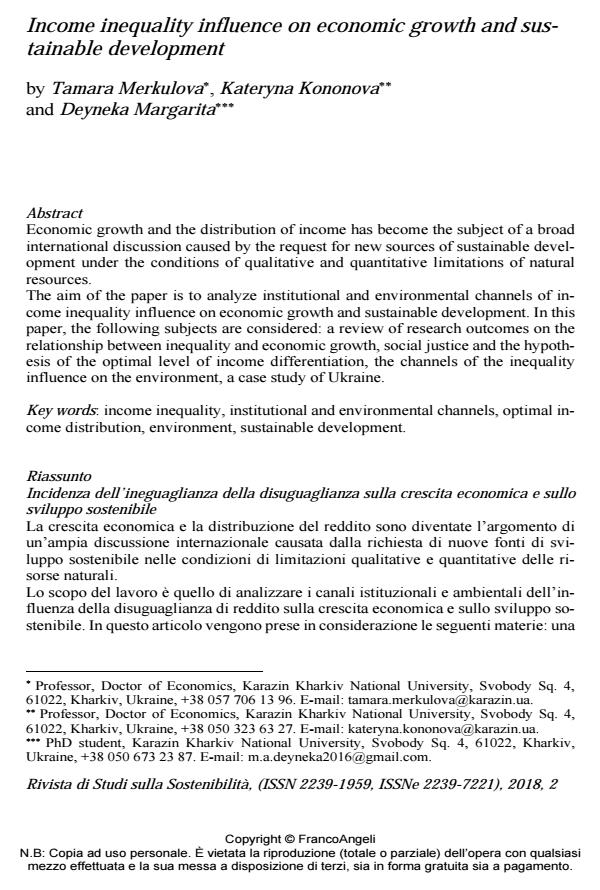Income inequality influence on economic growth and sustainable development
Titolo Rivista RIVISTA DI STUDI SULLA SOSTENIBILITA'
Autori/Curatori Tamara Merkulova, Kateryna Kononova, Margarita Deyneka
Anno di pubblicazione 2019 Fascicolo 2018/2
Lingua Inglese Numero pagine 17 P. 27-43 Dimensione file 251 KB
DOI 10.3280/RISS2018-002003
Il DOI è il codice a barre della proprietà intellettuale: per saperne di più
clicca qui
Qui sotto puoi vedere in anteprima la prima pagina di questo articolo.
Se questo articolo ti interessa, lo puoi acquistare (e scaricare in formato pdf) seguendo le facili indicazioni per acquistare il download credit. Acquista Download Credits per scaricare questo Articolo in formato PDF

FrancoAngeli è membro della Publishers International Linking Association, Inc (PILA)associazione indipendente e non profit per facilitare (attraverso i servizi tecnologici implementati da CrossRef.org) l’accesso degli studiosi ai contenuti digitali nelle pubblicazioni professionali e scientifiche
Economic growth and the distribution of income has become the subject of a broad international discussion caused by the request for new sources of sustainable development under the conditions of qualitative and quantitative limitations of natural resources. The aim of the paper is to analyze institutional and environmental channels of income inequality influence on economic growth and sustainable development. In this paper, the following subjects are considered: a review of research outcomes on the relationship between inequality and economic growth, social justice and the hypothesis of the optimal level of income differentiation, the channels of the inequality influence on the environment, a case study of Ukraine.
La crescita economica e la distribuzione del reddito sono diventate l’argomento di un’ampia discussione internazionale causata dalla richiesta di nuove fonti di svi-luppo sostenibile nelle condizioni di limitazioni qualitative e quantitative delle ri-sorse naturali. Lo scopo del lavoro è quello di analizzare i canali istituzionali e ambientali dell’influenza della disuguaglianza di reddito sulla crescita economica e sullo svi-luppo sostenibile. In questo articolo vengono prese in considerazione le seguenti materie: una rassegna dei risultati della ricerca sulla relazione tra disuguaglianza e crescita economica, giustizia sociale e l’ipotesi del livello ottimale di differenzia-zione del reddito, i canali dell’influenza dell’ineguaglianza sull’ambiente, un caso studio dell’Ucraina.
Parole chiave:Disuguaglianza dei redditi, canali istituzionali e ambientali, distri-buzione ottimale del reddito, ambiente, sviluppo sostenibile.
Tamara Merkulova, Kateryna Kononova, Margarita Deyneka, Income inequality influence on economic growth and sustainable development in "RIVISTA DI STUDI SULLA SOSTENIBILITA'" 2/2018, pp 27-43, DOI: 10.3280/RISS2018-002003